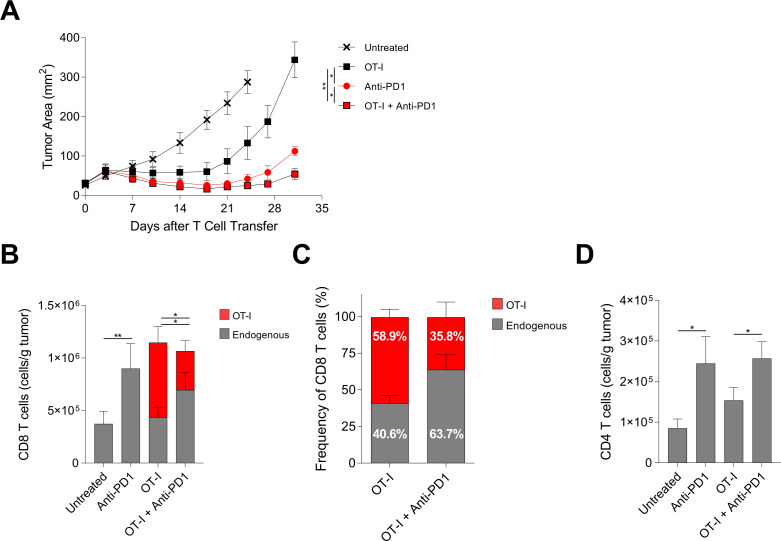Figure 1.
PD-1 blockade enhanced adoptive T-cell therapy and was associated with decreased tumor infiltration by transferred T cells and increased tumor infiltration by endogenous T cells. (A) Tumor response to treatment with adoptive T-cell therapy with or without PD-1 blockade. C57BL/6J (CD45.2+) mice with established B16-K-OVA tumors were treated with host conditioning followed by the treatment indicated in the symbol legend. ‘OT-I’ indicates OT-I T cell (CD45.1+) administration. ‘Anti-PD-1’ indicates anti-PD-1 antibody administration. Statistical significance was determined with a mixed model two-way analysis of variance with repeated measures. The data shown are representative of three independent experiments. (B) Absolute numbers (cells/g tumor) of transferred OT-I T cells (CD45.1+, red) and endogenous CD8 T cells (CD45.2+, gray) infiltrating tumors on day 7 after treatment. Statistical significance was determined with an unpaired t-test. (C) Proportion of transferred OT-I T cells (CD45.1+, red) and endogenous CD8 T cells (CD45.2+, gray) infiltrating tumors on day 7 after adoptive cell transfer. (D) Absolute numbers (cells/g tumor) of endogenous CD4+ T cells infiltrating tumors on day 7 after adoptive cell transfer. Statistical significance was determined with an unpaired t-test. All data have five mice per group and are represented as mean±SEM. * represents p<0.05, ** represents p<0.01. See also online supplemental figure S1. PD-1, programmed cell death protein-1.

